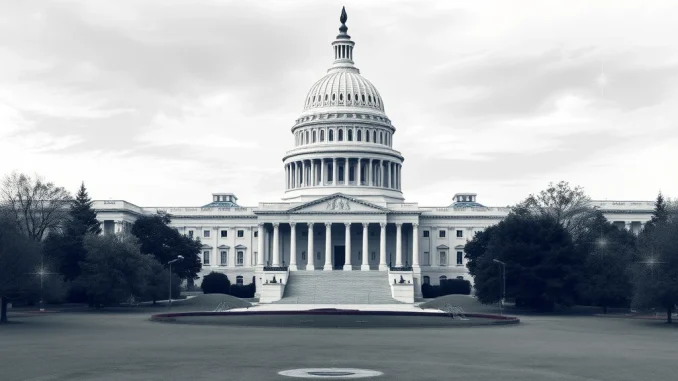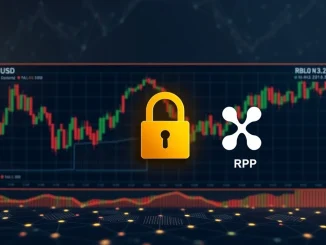
Significant changes may be on the horizon for the U.S. regulatory landscape, particularly concerning the CFTC (Commodity Futures Trading Commission). Reports indicate potential key departures that could reshape the agency’s composition and operations, with potential ripple effects for markets, including the evolving world of crypto regulation.
Understanding the Potential Shift at the CFTC
The core of the recent news revolves around potential changes in the leadership and membership of the U.S. CFTC. This independent agency plays a critical role in overseeing the U.S. derivatives markets, which includes futures, options, and swaps. Its jurisdiction also touches upon certain aspects of digital assets, making its composition and policy direction highly relevant to participants in the cryptocurrency space.
According to reports, two current members are contemplating their departures:
- Caroline Pham: Currently serving as an acting chair, her potential departure is reportedly linked to the anticipated confirmation of Brian Quintenz as the new chair. A change in the chair often leads to shifts among other commissioners appointed by the previous administration or serving in interim capacities.
- Summer Mersinger: Another commissioner whose planned exit is also reported. Her departure, combined with Pham’s, would significantly reduce the agency’s active membership.
These planned exits are not just routine personnel changes; they carry significant implications for the agency’s ability to function and make decisions effectively. The CFTC is typically composed of five commissioners, appointed by the President and confirmed by the Senate. By statute, no more than three commissioners can be from the same political party, ensuring a degree of bipartisan representation.
Why Do These Exits Matter for U.S. Regulation?
A reduction in the number of commissioners directly impacts the agency’s quorum requirements and its ability to maintain a party majority. If Caroline Pham and Summer Mersinger both depart, the CFTC could be left with as few as two members. This scenario creates several potential challenges for U.S. regulation:
With only two members, the agency might struggle to achieve a quorum for certain decisions, potentially slowing down or stalling critical regulatory actions, rulemakings, and enforcement proceedings. The loss of a clear party majority can also lead to potential deadlock on contentious issues, making it harder for the agency to adopt new policies or respond to rapidly evolving markets.
The stability and composition of regulatory bodies like the CFTC are crucial for providing clarity and certainty to markets. Uncertainty regarding the agency’s ability to function or its future policy direction can create hesitation among market participants and potentially impact innovation and investment, particularly in nascent areas like digital assets.
Potential Impact on Crypto Regulation
While the original report focuses on the CFTC‘s general composition, the implications for crypto regulation are significant. The CFTC has asserted jurisdiction over certain digital assets deemed commodities, such as Bitcoin and Ethereum futures. It has also taken enforcement actions against platforms and individuals related to digital asset derivatives.
Here’s how the potential staff changes could affect crypto regulation:
- Policy Direction: The views of individual commissioners on digital assets vary. Changes in personnel can lead to shifts in the agency’s approach to classifying, regulating, and enforcing rules related to cryptocurrencies and related products.
- Enforcement Pace: A reduced or deadlocked commission might slow down the pace of enforcement actions or the development of new regulatory frameworks specifically tailored for digital assets.
- Interagency Coordination: The CFTC works alongside other agencies, notably the SEC, on matters related to digital assets. Changes in leadership or capacity at the CFTC could affect the dynamics and effectiveness of this interagency coordination.
The cryptocurrency industry has been actively seeking regulatory clarity in the U.S. Stability and clear communication from regulators are paramount. The potential for instability at the CFTC due to the planned exits of Caroline Pham and Summer Mersinger introduces another layer of uncertainty into the regulatory outlook for digital assets.
What to Watch For
Market participants and observers interested in U.S. regulation should closely monitor several factors:
The confirmation process for Brian Quintenz and any subsequent nominees to fill the potential vacancies will be critical. The views and priorities of new commissioners will shape the agency’s future actions. Any official announcements or statements from the CFTC regarding its operational status or plans to address the potential staffing shortage should be noted. Finally, observing how the agency proceeds with pending rulemakings or enforcement cases related to digital assets will provide insight into the practical impact of these changes.
Conclusion: Navigating Regulatory Uncertainty
The potential departures of Caroline Pham and Summer Mersinger represent a significant moment for the CFTC and the broader landscape of U.S. regulation. While personnel changes are a normal part of government transitions, the prospect of the agency operating with minimal members and no party majority raises questions about its immediate operational capacity and long-term policy direction, particularly concerning crypto regulation. Staying informed about these developments is crucial for anyone navigating the complex intersection of finance and regulation in the United States.



